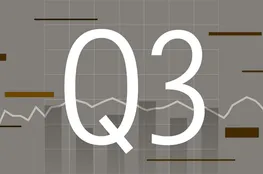The current bull market seems to be nearing its culmination, according to Michael Grant, Co-CIO of Calamos Investments. He suggests that stocks are suffering from what he terms "invincibility syndrome," with investors exhibiting an overconfidence that nothing can halt further gains. This overconfidence in the market, historically, indicates that we are approaching a major peak. Grant warns that after a potentially stellar year for large-cap stocks, we could enter an era of weaker returns, lasting many years. Grant notes that the market's condition is precarious, supported by data on valuation, sentiment, and positioning.
Multiple valuation indicators suggest stocks are priced at historically high levels. Notably, the median price-to-earnings ratio for the S&P 500 stands at 28, signifying the highest cost relative to earnings since the dot-com bubble. Furthermore, the Shiller cyclically adjusted price-to-earnings ratio has soared past 35, setting a new record. These statistics, combined with bullish sentiment indicators, point to heightened investor enthusiasm. The level of optimism, comparable to the sentiments before the dot-com crash, is mirrored in consumer surveys and reinforced by households' significant investments in equities and mutual funds. The financial behavior of households is telling.
US households held a staggering $42.43 trillion in corporate equities and mutual fund shares in the latest quarter, as per Federal Reserve data. Additionally, the proportion of cash relative to equity mutual funds by non-bank investors has dwindled to historic lows of around 30%, indicating minimal cushion against any potential downturn. Grant points out that this alignment in positioning signifies overconfidence and elevated valuations among US equities. He questions the market's ability to climb further when investor sentiment is already bullish. Investor optimism persists, largely fueled by positive outlooks on the US economy and anticipated interest rate cuts.
Yet, if the economy experiences a soft or no landing, significant rate reductions may not occur. Grant suggests that long-term risk-free yields have likely completed their decline, unless assumptions about the economic landing are fundamentally wrong. The current landscape seems to represent the final stages of the bull market, foreshadowing a more challenging period ahead, potentially lasting several years. Despite a push towards 6,000 for the S&P 500 indicating an outstanding year for large-cap stocks, Grant emphasizes that this doesn't guarantee continued success. The evidence suggests we may be witnessing a peak that could endure, marking a significant turn in the stock market's journey. Investors should brace for a period characterized by more volatility and possibly diminished returns compared to the robust years we've experienced.
























